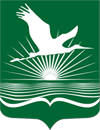Please use this identifier to cite or link to this item:
https://rep.polessu.by/handle/123456789/16190| Title: | Corticioid fungi (Basidiomycota) on living wooden plants in Belarus: species inventory and host colonization strategies |
| Authors: | Yurchenko, E. |
| Keywords: | Chondrostereum Corticiaceae s.I. Dendrothele parasite Peniophora rhytidome Stereum wound |
| Issue Date: | 2008 |
| Citation: | Yurchenko, E. Corticioid fungi (Basidiomycota) on living wooden plants in Belarus: species inventory and host colonization strategies / E. Yurchenko // Bothanica Lithuanica. – 2008. – Vol. 14, No. 3. – P. 177–189. |
| Abstract: | Forty-three species of non-poroid resupinate homobasidiomycetes were found on living above-ground wooden structures of trees and shrubs in Belarus. The specific sites for basidiomata attachment on host were classified, taking into account the preferences of different species. Thirty kinds of sites, or microhabitats, were distinguished. The most species-rich microhabitat, where 21 species were recorded, was non-injured bark of living trunks from ground level up to 2.5 m. Five species, typically inhabiting fallen wood and litter, occurred only at trunk bases. The second most preferable site was living bark, surrounding open wounds, colonized by 18 species, most frequent being Hyphodontia sambuci. Two species, Chondrostereum purpureumand Stereum hirsutum, manifested clear pathogenic abilities, causing the total death of tree or shrub. |
| Appears in Collections: | Публикации сотрудников / Publications of the teaching stuff of Polessky State University |
Files in This Item:
| File | Description | Size | Format | |
|---|---|---|---|---|
| Yurchenko_E_Corticioid fungi (Basidiomycota) on living wooden plants in Belarus_species inventory and host colonization strategies.pdf | 1.91 MB | Adobe PDF | View/Open |
Items in DSpace are protected by copyright, with all rights reserved, unless otherwise indicated.
